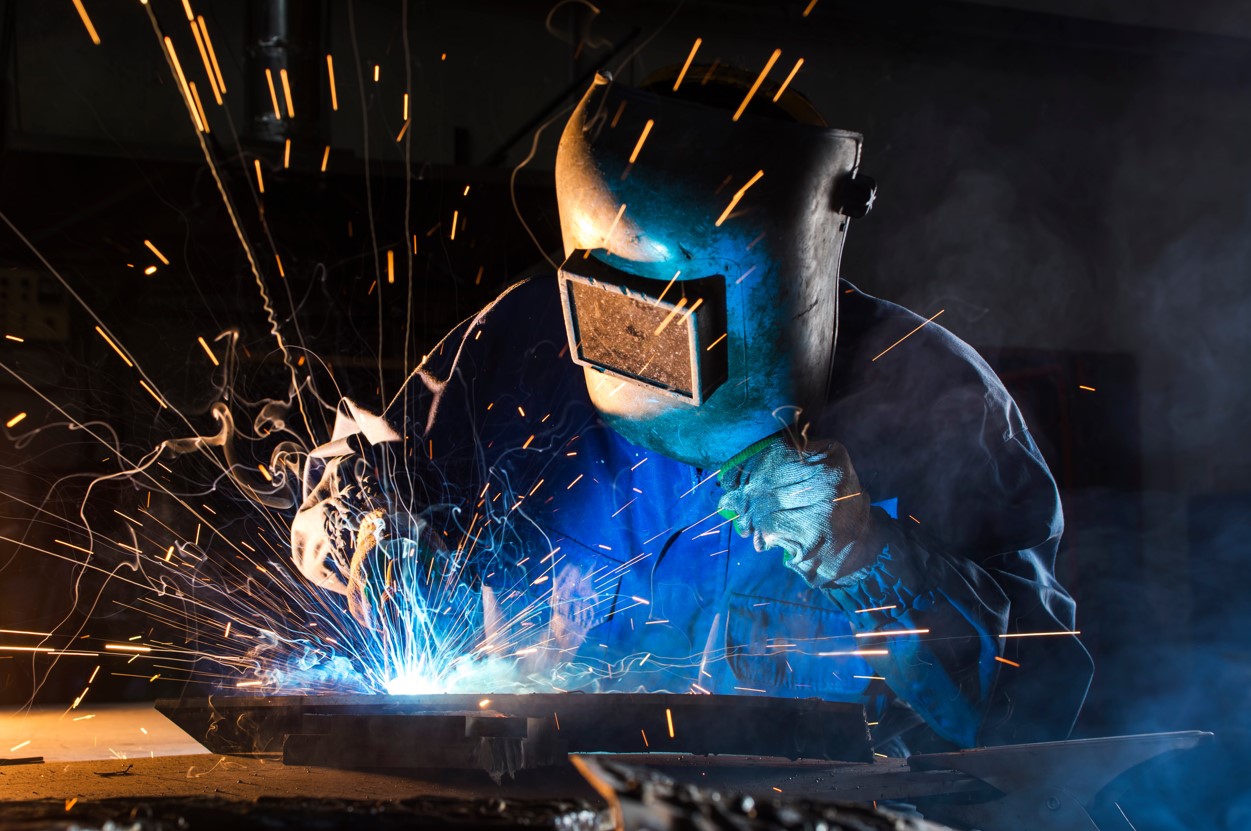
Now that you’ve learned how to weld, you realize you can put this skill to work for you with various DIY projects around your home. But before doing so, you will need various types of equipment and other things for your home set-up. To make sure you get your at-home welding off to a solid and safe start, here are some essentials that will need to be at the top of your list.
Welding Helmet and Gloves
Before you even start thinking about the actual welding equipment you’ll need for your home set-up, begin by first purchasing a high-quality welding helmet and set of welding gloves. Remember, welding helmets are designed with specialized shields that protect your eyes from UV and infrared light, both of which could lead to permanent eye damage. The gloves, which should always be composed of leather or other heavy-duty synthetics, should let your fingers move easily when using your welding equipment.
MIG Welder
For most welding home set-ups, a MIG welder will be your main piece of equipment used for most jobs. As you look at various Kemppi Welding Machines MIG welders, you’ll find many different types from which to choose. Though you can opt for a high-end model, most home welders find they can purchase MIG welders ranging in cost from $200-$500 that serve their needs.
Designated Workspace
When doing welding at your home, always try to have a designated workspace for your projects. This area should always be well-lit and not contain any flammable substances, be it gasoline or anything else. Keep in mind that when you are welding, sparks may fly up to 25 feet away, so always select a workspace that gives you plenty of room for your projects.
Angle Grinders and Tools
An angle grinder can be very useful for your home welding projects since it can be used to remove imperfections after you weld something, cut through metal, and help prepare a metal piece to be welded. Other tools you should have available include a variety of cutting and sanding discs for your grinder, welding pliers to help remove spatter following a weld, clamps of various sizes to hold items being welded in place, and welding magnets, which you can use to quickly hold and reposition metal pieces that are magnetic.
Once you have all of these items as part of your home welding workshop, you will be able to not only complete almost any DIY project you have in mind but do so in a manner that is safe and efficient.
